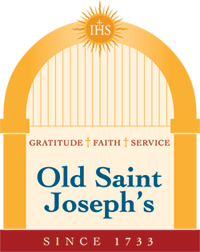for June 20
Memorial of the Immaculate Heart of Mary
Today’s reading from the Gospel of Luke reminds me of a well-known statement attributed to the distinguished French philosopher Paul Ricoeur (d. 2005). He was born in France and taught at the University of Chicago for many years where he wrote important works in philosophy and religion. In one of his major books Ricoeur observed that “symbols give rise to thought” in a study about how religious symbols can communicate religious truth. I’ve always found this notion to be instructive and helpful when trying to study and think about how religious texts function in our Christian faith tradition.
Luke’s Gospel today is chock full of symbols as the young boy Jesus travels to Jerusalem with his parents for the Passover celebration. Jesus appears in Jerusalem in the very place where his mission of salvation is completed in his suffering, death, and resurrection. This passage anticipates Jesus’ later return to Jerusalem with all its meaning and significance in Christian thought and faith. Here in Luke, Jesus, even as a child is preparing to carry out his mission and his parents are the first witness of these important events. We also encounter “Temple Talk” (a term one of my scripture teachers liked to use) where in the story Jesus is placed teaching in the Temple of Jerusalem—in other words, at the very center of Jewish religious belief, thought, law, and ritual practice. It would be difficult to overestimate the religious significance of this event. Important things happen in the Temple and Jesus is doing something very important teaching there.
The story itself presents complex layers of human and religious symbolism. Readers can easily identify with the great worry and confusion of Jesus’ parents. Any parent would be greatly troubled thinking that his or her child were lost. Luke makes clear that Jesus stays behind by his own choice and not because of neglect on the part of his parents. After much worry and searching, when Jesus’ parents encounter him in the Temple he submits to them as he will also submit to the cross later in the Gospel story. Many parents have been in similar circumstances (a lost child in the Costco shopping center) and hopefully only for a shorter period of time. It seems that the parental search that lasted three days is a direct reference to Jesus’s three days in the tomb before his resurrection. In these and other ways Luke draws the reader into the great story and trajectory of Jesus’ life. Yet Mary and Joseph struggle to understand. They are rightly confused about the meaning of what their son is doing and saying. We too may share similar reactions to our own lives right now in these days of global health emergency. The future and the meaning of these world events and experiences close to us now remain uncertain and at times confusing, or worse. Early Greek stories often used the basic literary form of showing in the hero’s youth a glimpse into his or her future importance and accomplishments. Luke may be doing something similar here. The evangelist early in this Gospel shows us a glimpse into the future Jesus will live out. Each of the Gospels present to us multi-layered symbols that are rich in religious meaning and reveal fundamental Christian truth.
I can’t help but think that the basic human experience of “being lost” and then the different but related experience of “finding” or that of “being found”is being played out in this passage. In Luke, “being lost” is associated with death and “being found” is linked to “coming back to life” (Luke 15:32). Many of us right now in our lives may be feeling somewhat or even deeply lost, grieving lost friends and family members taken by the horrible virus that even now still haunts us. There are many other losses too. I see this passage in Luke pointing to Jesus’ future resurrection and also to our own hope for resurrection as we continue to search for him now.
There is a narrative dimension to all of our experience. Thinkers like Paul Ricoeur knew well and tried to teach us that we can get closer to the deepest parts of our existence through story. Poetry, novels, drama, music, writing of all kinds are human experiences of encounter and meaning for us. Luke’s Gospel today offers us a glimpse into the meanings of Jesus’ early life (stories that are generally rare in scripture). This particular story—and our own stories too—foreshadow how Jesus’ life and our own lives are caught up in the Father’s love and offer of salvation to humanity.
–Francis T. Hannafey SJ.
Today’s readings can be found on the US Conference of Catholic Bishops’ website.
Mass Times
Sunday at 7:30 AM, 9:30AM, 11:30 AM
Tues., Wed., & Thurs. at 12:05 PM
